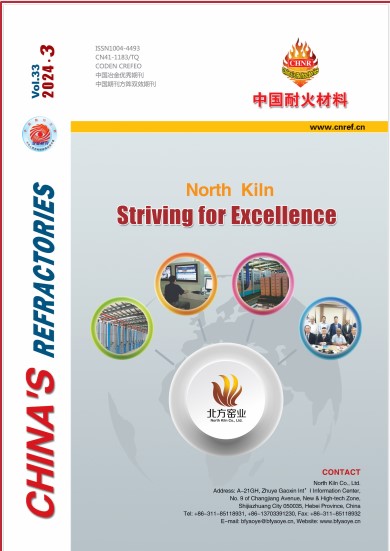
- Performance Assessment on Corrosion Resistance of Refractory Materials Based on High-temperature Machine Vision Technology
- 作者:Chenchen LIU1 , Ao HUANG1*, Yan YU2*, Guoping WEI2 , Shenghao LI1 , Huazhi GU1
- 作者机构:1 The State Key Laboratory of Refractories and Metallurgy, Wuhan University of Science and Technology, Wuhan 430081, China 2 Zhejiang Zili High Temperature Technology Co., Ltd., Shaoxing 312300, China
- 分类号:
- 卷号:
- 期号 : 2024 年, 第3期
- 页码:42 - 48
内容简介
Refractory materials, as the crucial foundational materials in high-temperature industrial processes such as metallurgy and construction, are inevitably subjected to corrosion and penetration from high-temperature media during their service. Traditionally, observing the in-situ degradation process of refractory materials in complex high-temperature environments has presented challenges. Post-corrosion analysis are commonly employed to assess the slag resistance of refractory materials and understand the corrosion mechanisms. However, these methods often lack information on the process under the conditions of thermal-chemical-mechanical coupling, leading to potential biases in the analysis results.
所需耐材币:0
热点排行
- Thermomechanical Modelling of Industri [112]
- The Influence of Biomass Cokes on the [116]
- Exploring Dry-out Behaviour and Explos [123]
- Regulation of Pore Structure and High- [121]
- Investigation on Effect of Composition [121]
- Potential of Applying Artificial Intel [77]
- Performance Assessment on Corrosion Re [110]